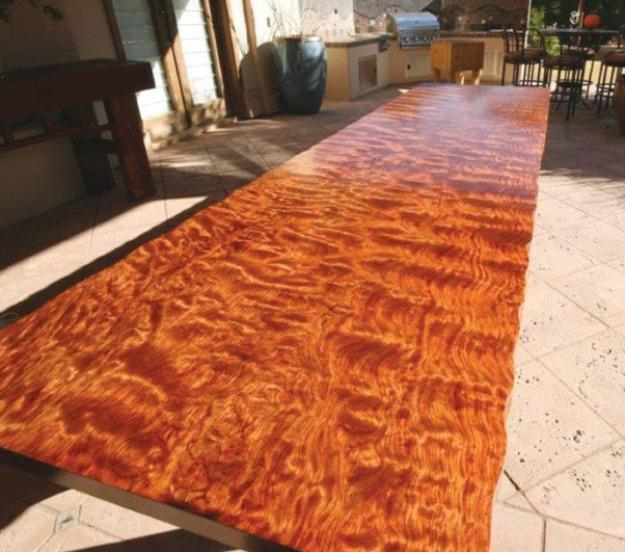Bubinga

Fine furniture and cabinetry, ornamental veneers, elegant turnery, inlay work, joinery, flooring, and decorative paneling all use Bubinga wood. It is prized for its high strength-to-weight ratio, attractive detailing, and resemblance to rosewood. Bubinga is utilized for solid countertops and tabletops since it comes in vast widths and lengthy lengths. It's not uncommon to see flawlessly Quarter-sawn boards wider than 15 inches because it originates from huge logs.
Bubinga is also known as African rosewood, amazoue, amazique, kevazingo, and ovangkol, among other names. Inlays and high-end furniture, particularly by contemporary Arts & Crafts artisans, as well as high-end woodworking equipment such as smooth plane front knobs and rear handles, knife handles, and medium-end tobacco pipes, are all made from the wood.
Because of its mellow, well-rounded sound and diverse range of grain patterns, luthiers frequently use the wood for harps and other instruments such as bass guitars. Bubinga and ovangkol are commonly used by Warwick Bass and Ibanez. It's also been used in drum shells. Tama, for example, offers a variety of high-end drum sets featuring Bubinga plies in the shells. Bubinga is also used by Crafter on several of their instruments. Bubinga's shape and toughness make it a popular choice for both acoustic and electric guitars.










